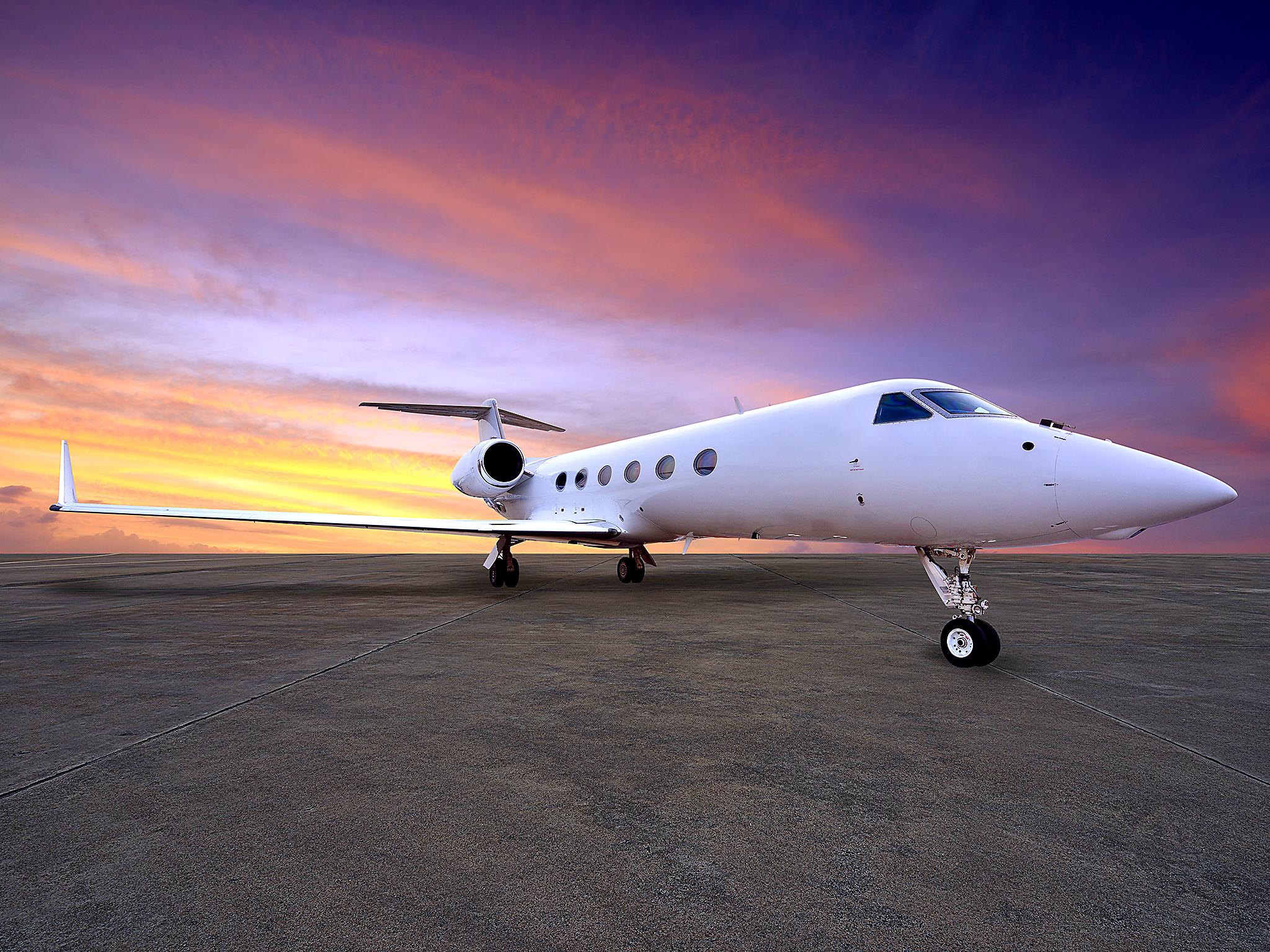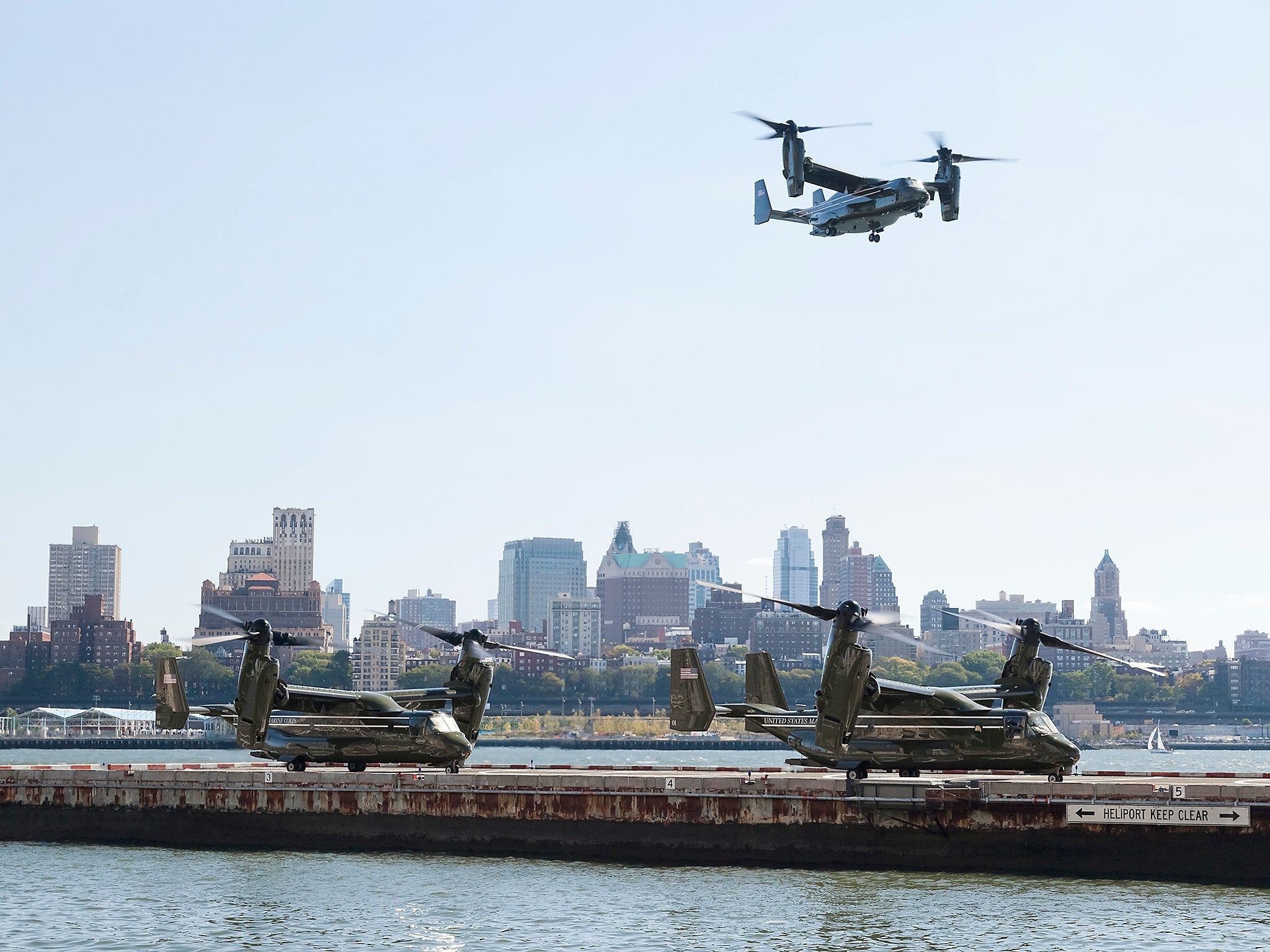Why American air travel could be transformed with tiny electric planes and £20 tickets
A fleet of hybrid-electric planes, described as the ‘Tesla of the air’, could make cheap and convenient short-haul flights a reality

Your support helps us to tell the story
From reproductive rights to climate change to Big Tech, The Independent is on the ground when the story is developing. Whether it's investigating the financials of Elon Musk's pro-Trump PAC or producing our latest documentary, 'The A Word', which shines a light on the American women fighting for reproductive rights, we know how important it is to parse out the facts from the messaging.
At such a critical moment in US history, we need reporters on the ground. Your donation allows us to keep sending journalists to speak to both sides of the story.
The Independent is trusted by Americans across the entire political spectrum. And unlike many other quality news outlets, we choose not to lock Americans out of our reporting and analysis with paywalls. We believe quality journalism should be available to everyone, paid for by those who can afford it.
Your support makes all the difference.Imagine you’re city-hopping in the US and taking your next trip of a couple hundred miles. New York City to Boston, for example. Or Houston to Dallas. Tampa to Miami.
The obvious choice might be to drive. But what if you could show up at an airport at one of those cities, bypass security checkpoints, board a small hybrid-electric plane with luggage in hand, and be on the ground at your destination in about an hour – all for about $25 (£20) each way?
A company called Zunum Aero hopes to make that a reality, so travellers who normally take a car, bus or train for regional trips won't think twice about flying. The Washington state-based start-up says that since 2013, it has been developing a fleet of hybrid-electric planes that would make those kinds of inexpensive, short-haul flights possible.
The company has some heavyweight investor partners, including Boeing’s HorizonX and JetBlue Technology Ventures, subsidiaries of their respective companies. It also faces a number of competitors and obstacles, particularly battery limitations. But if successful, it could significantly change regional air travel, where options have shrivelled and costs have crept up in recent decades.
“Think of it as Tesla of the air”, said Bonny Simi, president of JetBlue Technology Ventures. “[Or] think of it as an electric bus in the air”.
Zunum Aero emerged from “stealth mode” on Wednesday to announce its ambitious goals: to be flying routes of up to 700 miles – think Atlanta to Washington DC – by the mid-2020s and then routes of up to 1,000 miles – think Los Angeles to Seattle – by 2030.

The start-up also laid out an array of promises: door-to-door travel times cut in half; lower operating costs; airfares that would be 40 to 80 per cent lower. All on quiet hybrid aircraft that would produce 80 per cent less emissions. Indeed, part of the company name was inspired by “tzunuum”, the Mayan word for the hummingbird, for the bird's speed and efficiency.
“To be perfectly honest, we’ve been wanting to tell the story for four years,” Zunum Aero chief executive Ashish Kumar told The Washington Post. “What we’ve been building towards is really exciting and we believe fundamentally is going to change the shape of regional aviation.”
Kumar thinks operating costs for the company’s hybrid-electric planes could be 40 to 80 per cent lower than for conventional aircraft. A small range-extending generator, he adds, would be integrated into early planes, kicking in on longer flights where battery power isn’t enough. The eventual goal would be for battery technology to become advanced enough to have planes relying entirely on electricity, eliminating fuel costs altogether.
There are several reasons that people rarely choose to fly for short regional trips. Flying often means allotting extra time for getting to the airport, going through security and then boarding. Also, the airline industry’s shift to larger planes and big-city hubs created what Kumar calls a “regional transport gap”.
Flights from midsize cities are now often routed through hubs, meaning door-to-door times for those trips are no better than they were 50 years ago, Kumar said. And air options for smaller communities have been dwindling or disappearing, he added. Today, 97 per cent of US air traffic comes from 2 per cent of the more than 5,000 airports in the country, according to a forecast by the Federal Aviation Administration.
About 95 per cent of trips under 500 miles are taken by car, according to research by the US Department of Transportation. For trips between 500 and 750 miles, about 61 per cent of travellers drive and 34 per cent fly. For trips between 750 and 1,000 miles, a little more than half of travellers fly and 42 per cent drive.
Zunum Aero’s Kumar and his team think this is where electric-hybrid planes can step in. Whereas a Boeing 737 today seats anywhere from 85 to more than 200 passengers, a Zunum plane would have from 10 to 50 seats. Because smaller aircraft are subject to fewer security regulations, those passengers would likely be able to skip long security queues. Removing luggage check-in options also would save on time on the ground, he said. The resulting trip would feel more like a cross between private corporate air travel and hopping on a bus.
Still, the company is not without its competitors and detractors. This year, a Massachusetts-based start-up called Wright Electric announced similar plans to roll out “zero-emissions electric airliners designed to save money and our planet” within a decade. But the company, which is backed by start-up accelerator Y Combinator, has said it is relying on continued advances in battery technology. This is “not there yet” according to Graham Warwick, technology editor of Aviation Weekly.
Speaking to the BBC last month he said: “It’s projected to come but it needs a significant improvement. Nobody thinks that is going to happen anytime soon.”
It remains too early to tell what the commercial aviation industry will look like by the mid-2020s and whether one-way fares in the $25 range would be feasible then. Even now, it is not unheard of for low-cost carriers such as Frontier or Spirit to offer double-digit airfares on domestic routes.
That hasn't stopped others from diving into hybrid-electric aerospace projects. Airbus has also been developing E-Fan, its hybrid electric aircraft since 2014. In 2015 it became the first all-electric twin-engine plane to cross the English Channel. Though the E-Fan has only two seats, Airbus is hoping the technology will lead to the development of a regional airliner or helicopter.
Plans for helicopter-esque electric VTOL – vertical take-off and landing – aircraft have also been emerging from Silicon Valley. According to Andrew J. Hawkins of New York-based tech website The Verge companies such as Uber and Airbus are working on developing their own VTOLs.
“Because nothing says ‘I'm very rich and I hate traffic’ like a flying car project,” Hawkins wrote for the technology site.
In a statement, Boeing HorizonX said it was confident in investing in Zunum Aero “because we feel its technology development is leading this emerging and exciting hybrid-electric market space.”
Simi compared the push for hybrid-electric planes to the airline industry’s advancement from strictly propeller planes to jet aircraft.
“It’s that type of transformation,” said SImi. “We’re very excited about where this is going. It’s still very early, of course. We now have a seat at the table at what we believe is going to be an amazing change.”
© The Washington Post
Join our commenting forum
Join thought-provoking conversations, follow other Independent readers and see their replies
Comments